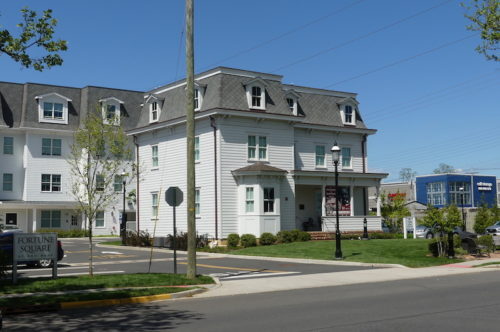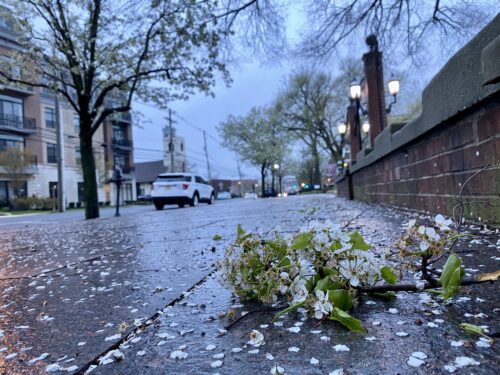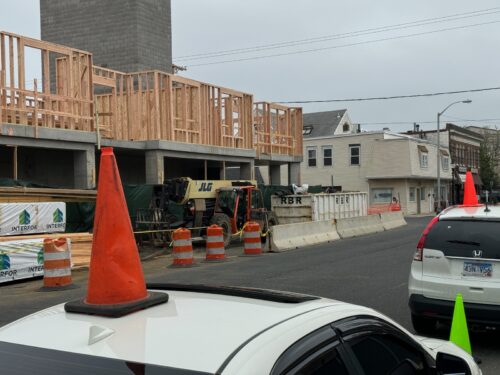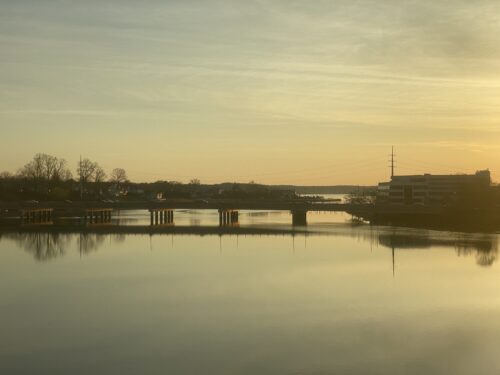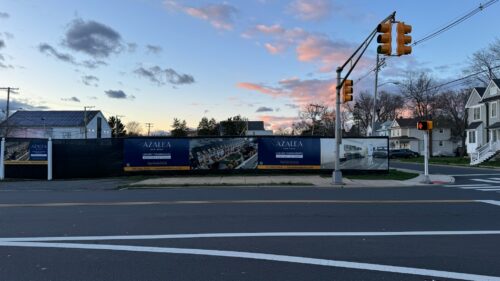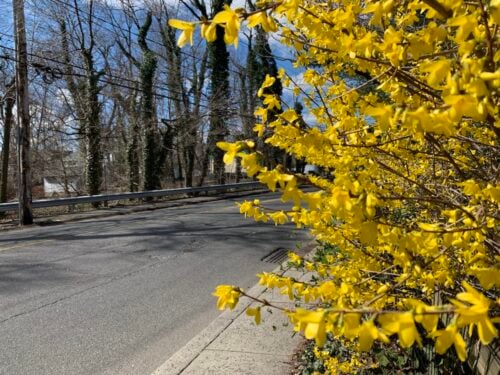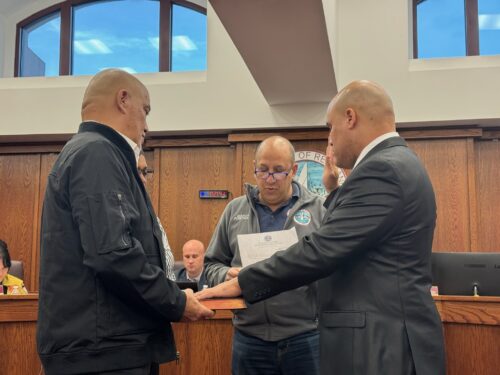
By CONNOR SOLTAS
 An effort to do away with the dilapidated riverfont bulkhead at the Red Bank Public Library and let it go natural appeared to get washed aside Tuesday night when borough officials raised a legal issue.
An effort to do away with the dilapidated riverfont bulkhead at the Red Bank Public Library and let it go natural appeared to get washed aside Tuesday night when borough officials raised a legal issue.Turns out that the 1937 deed that transferred the former Eisner family home to the borough for use by the library requires the town to keep the bulkhead “in good repair,”officials said at a meeting of the Environmental Commission.
Because the deed did not explicitly permit replacing the bulkhead with a more eco-friendly option, the borough may only rebuild the bulkhead, instead of replacing it with a “natural shoreline” favored by environmental advocates, borough attorney Dan O’Hern and administrator Stanley Sickels said Tuesday night.
“The governing body’s action should be to repair it as required by the deed,” said O’Hern. “It’s as simple as that.”
Until Tuesday’s meeting, the “living shoreline” solution proposed by the American Littoral Society had seemed a viable course of action. The living shoreline would involve a sloped beach to the Navesink River, one that allowed the passage of wildlife and protected against erosion, unlike the existing vertical bulkhead.
“Our goals about promoting the habitats and overall health of estuaries have come with this idea,” said ALS Executive Director Tim Dillingham.
The Environmental Commission did not view the deed’s terms as so clear-cut a “no.”
“Discussions seemed to indicate that there may be room for interpretation,” said commission chair Laura Bagwell said. “However, it seems that the borough is conservatively interpreting the deed to attempt to minimize risk.”
If the borough pursues the living shoreline option, O’Hern argued it could lose the library property in a lawsuit. “Anybody could challenge it,” he said.
If such a challenge were successful, the property would go to the Harvard Endowment, as per terms of the deed.
“If someone’s not happy with the fact that a living shoreline is there, there’s nothing stopping them from filing a lawsuit,” he said.
The possibility is not all too remote, especially for Michele Ciganek of Red Bank, who owns a home adjacent to the bulkhead’s location. Ciganek worried the living shoreline could damage her property at the Corinthian Cove condos.
“If something happens to our property as a result [of the living shoreline], then you, the borough, will be held responsible,” Ciganek said at Tuesday’s meeting.
The legal obstacles, for the moment, trump any financial concerns as well. Borough administrator Sickels indicated grants for “shore protection money” that Red Bank might apply for to finance the restoration would hinge on whether the borough has the right to proceed at all predominated in Tuesday’s discussion.
Neither can the deed be amended to allow a living shoreline, said Bagwell.
“In effect, the Eisner family is controlling the property from beyond the grave,” O’Hern said.
Heres a 1937 news story reporting on the donation of the Eisner house to the borough: Article
redbankgreen summer intern Connor Soltas of Rumson is entering his senior year at Phillips Exeter Academy in New Hampshire.


